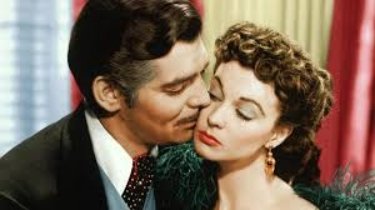Margaret Mitchell Was a Cold-Eyed Realist Not a Romantic
"Gone With the Wind", "Gone With the Wind" (1939), Left-wing Intolerance, Margaret Mitchell, Racial Politics
Turner Classics Movies is broadcasting “Gone With the Wind” (1939) tonight at 8:00 PM EST. It might be advisable to catch what may be one of the famous film’s last public viewings. Woke hysteria finds the social attitudes and language of 1939 every bit as unacceptable as those of 1859.
Today, GWTW must be presented with a warning label:
“Presented as originally released in 1939. Includes themes and character depictions which may be offensive or problematic to contemporary audiences.”
Bruce Bawer has a good essay, just out in the New Criterion, that corrects a large number of common misconceptions about the novel.
Gone with the Wind tells the story of the flirtation, lasting from the eve of the war until many years after, between Scarlett and Rhett. They’re drawn to each other, Mitchell wants us to understand, because they’re both, by nature, at odds with the social system into which they were born. If Mitchell celebrates anything, it’s not the conformist pre-war lives of planters and their families but the spirit of nonconformity exhibited by Rhett and Scarlett. During the war, the other members of their race and class are devoted heart and soul to what they describe as “the Cause.†In her account of the Atlanta bazaar, Mitchell describes the devotion of the women present to “the Causeâ€â€”“A Cause they loved as much as they loved their men, a Cause they served with their hands and their hearts, a Cause they talked about, thought about, dreamed about.†But neither Scarlett nor Rhett has any attachment whatsoever to the “Cause.†He runs Union blockades, he tells her, only to enrich himself; as for Scarlett, it’s plain from the first page that she has no attachment to the Confederacy. Toward the novel’s end, he says: “We are both scoundrels, Scarlett, and nothing is beyond us when we want something.†When Scarlett finally realizes that she loves not Ashley (the now-useless embodiment of pre-war Southern knighthood) but Rhett, she sees that “he, like her, saw truth as truth, unobstructed by impractical notions of honor, sacrifice, or high belief in human nature.†With this long-delayed self-insight, Scarlett fully embraces Mitchell’s own cold-eyed realism.
No, this is assuredly not a soggy, sentimental drama of cavaliers and chivalry, but a candid, even cynical, study of two strong-minded survivors set against the backdrop of America’s greatest social upheaval. Nor is it, as Mitchell readily and repeatedly admitted, a beautifully written book or a masterpiece of plotting. (She could never grasp why it became a bestseller or won the Pulitzer Prize.) But there’s no fictional work that paints a more sweeping and meticulous picture of the South at war, or that contains more characters of that place and time—women and men, black and white—who stir our sympathies and tremble with life. It’s a puzzlement, then, that Selznick—who in supervising the writing and rewriting of the script was almost fanatically insistent that, wherever possible, it was preferable to use dialogue from the novel rather than to write original lines—decided to frame the film with a title card that invites audiences to view the pre-war South with a romantic nostalgia that Mitchell’s book itself urges the reader to reject.




